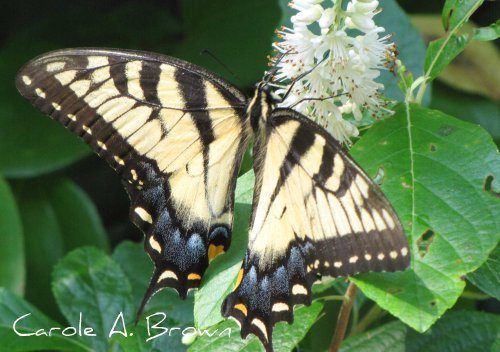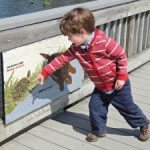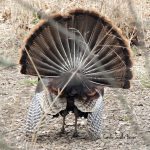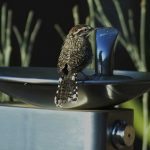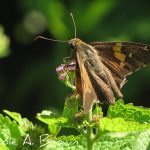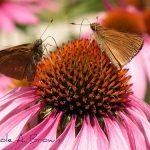One of the best ways that I’ve found to get inspiration for my wildlife garden is to go and visit other wildlife gardens.
First, you get to meet other wildlife gardeners who are just as passionate about creating welcoming habitat for wildlife in their gardens as you are. These gardeners are eager to share their successes (and their failures). It’s a wonderful way to make new friends who share their excitement. And I have made many life-long friends this way.
Wildlife gardeners are such a fun group. Visit their garden and they’ll eagerly show you every butterfly chrysalis, every bird’s nest, and every plant that a butterfly has laid its eggs on. And their enthusiasm is infectious!
Second, you’ll get lots of ideas that you can try in your own garden. When you see a particular plant that is just covered with butterflies, and another that has loads of caterpillars, and another that the birds just can’t keep away from, then you’ll want to add these to your own wildlife garden.
Every year I make room in my calendar to attend the wildlife garden tour series led by my friend and mentor, Pat Sutton who has been leading tours of private wildlife gardens in Cape May County, NJ for many years.
Pat has been teaching workshops about creating wildlife habitat in your garden in the Cape May area for a long time, and this is evident when you attend her series of wildlife garden tours.
Most of the gardens on the tours are owned by people who have taken Pat’s workshops and put the ideas into action. They were so excited about what they had learned that they went home and started creating wildlife habitat in their gardens right away.
Pat’s series of wildlife garden tours takes place over three days, and each three day block is repeated three times, in July, August, and September. Each day is devoted to a different section of Cape May County.
It’s really fun to attend all three sets of tours so that you can see the changes in each garden over time, and as the focus shifts from butterflies, to hummingbirds, to Monarch migration.
Pat has published a wonderful series of photos showcasing each section of the tours:
- Southern Cape May County
- Cape May Mid County
- Northern Cape May County
Please go check out these stunning photos. Also, my friend Pat is a published author and an in-demand speaker, but she’s new to blogging, so please leave her lots of welcoming comments so that she continues to share her beautiful photos and wildlife gardens with us 🙂
To learn more about Pat Sutton, I’ve written about her several times before. See:
Pat Sutton: Ecosystem Gardening Hero
A Visit to Pat Sutton’s Garden
Here are some popular and beautiful wildlife gardens around the United States:
1. The Mesker Park Zoo & Botanic Garden (Indiana): This garden is home to over 350 species of plants, including tropical, native and water-wise varieties. It also features a wide variety of wildlife, including amphibians, reptiles, birds and mammals. Visitors can explore the lush gardens, which feature a variety of pathways, ponds and benches.
2. Santa Barbara Botanic Garden (California): This botanic garden is home to over 1,000 species of plants, many of which are native to the region. It also features a variety of wildlife, including butterflies, lizards and birds. Visitors can explore the trails, look for wildlife and enjoy a variety of educational activities.
3. Lewis Ginter Botanical Garden (Virginia): This garden is home to over 50 acres of gardens, ponds, woodlands and wildlife. It features a variety of plants, including native and water-wise varieties. Visitors can also explore the trails and look for wildlife, including birds, frogs and turtles.
4. The Atlanta Botanical Garden: This garden is home to a variety of wildlife, including butterflies, hummingbirds, and dragonflies. There are also numerous plants and flowers that are beneficial to wildlife.
5. The San Diego Zoo Safari Park: At this park, visitors can view more than 3,500 animals, including many rare and endangered species. There are also many gardens that provide food and shelter for the animals.
6. The Oregon Zoo: This zoo is home to more than 1,800 animals, including numerous birds, mammals, and reptiles. There are also many gardens that focus on providing food and shelter for the wildlife.
7. The Chicago Botanic Garden: This garden is home to numerous species of birds, butterflies, and other wildlife. There are also many gardens dedicated to creating habitats for the wildlife, such as wildflower meadows and wetlands.
More From Ecosystem Gardening:
Submit your review | |

